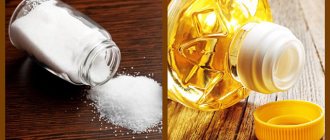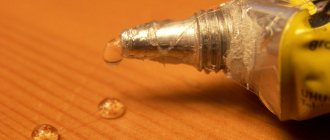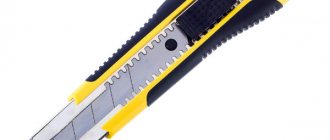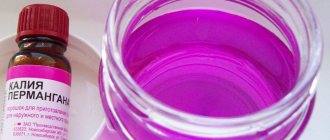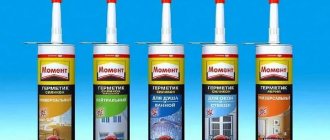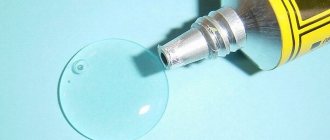Polyurethane foam is widely used during construction work, when installing doors, windows and more.
In addition to its positive characteristics, this material is highly durable. After a short time, it firmly adheres to the surface, making it difficult to remove. This becomes a real problem when material ends up on products where it shouldn't be.
Read the article about how you can remove polyurethane foam at home from laminate, wallpaper, cars, leather, fabric and other surfaces.
Cleaning up fresh tracks
If the polyurethane foam has not yet dried, remove it with a sponge and a solvent, for example, White Spirit, Cosmofen 5 or ATOLL. The stains will disappear in a few minutes. Varnished and painted objects cannot be cleaned this way, otherwise the caustic composition will ruin the coating. Take two spatulas: pry up the sealant and move it to another spatula. Then wipe the sticky residue with a cloth soaked in warm vegetable oil or vinegar and leave for a few minutes.
When cleaning, do not use water, otherwise the foam will immediately harden and be more difficult to remove. You can try to remove stains from clothes with water, after first removing the excess with a rag.
Helpful information
Tips for removing polyurethane foam from various materials:
- if the sealant lies on the surface in a lump, it needs to be cut off and only after that can you begin the main cleaning;
- before using aggressive compounds, they need to be tested on an inconspicuous area;
- To remove foam, it is better to use fluffy brushes rather than rags - this will allow you to clean off the building material rather than roll it up.
Removing dried foam mechanically
This method is suitable for wooden surfaces and other capricious materials for which aggressive solutions cannot be used. Can also be used for painted and varnished surfaces, if other methods are not suitable - if necessary, the coating can be restored.
Sequencing:
- cut off the dried layer of foam with a sharp knife;
- wipe off any remaining material with fine-grained sandpaper;
- rub the surface until smooth;
- varnish the treated area if necessary.
You can also clean your hands mechanically. To do this, wet the skin well, spread the contaminated areas with a rich cream and remove traces of foam with a pumice stone.
Removing dried foam using chemical means
If foam gets on fabric, glass or furniture, do not rub the surface too hard to avoid damaging or scratching it. In this case, use special cleaners - household chemicals or improvised methods.
Traditional methods
Dimexide.
This is an anti-inflammatory drug that is sold in pharmacies. Moisten a cloth generously with the mixture, apply to stains and leave for 15 minutes. When the foam becomes soft, remove it with the hard side of the sponge.
Vegetable oil.
Heat the oil to a temperature of 45°C, soak a sponge in it, wipe off the dirt and leave for half an hour. When the dirt becomes wet, remove it with a damp cloth soaked in soapy water.
Vinegar.
Mix table vinegar and water in equal proportions. Apply to hardened foam and leave for 25 minutes. Then clean with the hard side of the sponge.
Salt.
It is used to cleanse hands and clothes. Dissolve two tablespoons in a liter of warm water and soak your hands in the solution for several minutes. If you need to remove foam from the fabric, put it in the solution for 30 minutes.
Alcohol.
This method is suitable for removing small stains that have not yet dried. Pour medical alcohol into drops of polyurethane foam and leave for half an hour. Then wipe the area with a hard sponge.
Soap.
Will not remove sealant from hard surfaces, but will remove fresh stains from hands. Wash your hands with soap and wipe them with a washcloth, rinse with hot water.
Industrial solvents
Special chemicals have an aggressive composition, so use them according to the instructions on the package. Almost all industrial solvents are explosive, so do not use them near open flames and do not leave them near heating devices or in the sun.
Cosmofen 5.
The product is suitable for removing stains from PVC window profiles. Take a lint-free cloth and soak it in the solution, wipe away traces of foam, then rinse with soapy water. Cosmofen 5 not only removes sealant, but also removes abrasions and scratches, and forms a layer protecting against ultraviolet radiation. The average price for a liter jar is 500 rubles.
ATOLL.
Suitable for door and window frames, clothing and work tools. Spray the product onto the hardened foam, leave for ten minutes, then wipe with a damp cloth or sponge. A 500 ml bottle costs an average of 150 rubles.
Mastertex Premium.
Designed to clean any surfaces, disinfects and degreases them. Shake the can and spray onto the sealant. After 10 minutes, remove traces of foam and cleaner with a damp cloth. 500 ml of product costs from 300 rubles.
PENO-OFF.
It is used for any frames, glass, plastic, and working tools. The product copes equally well with fresh and dried foam. The method of application is the same as for Mastertex Premium. Price - from 200 rub.
TYTAN PROFESSIONAL.
This cleaner removes dried foam and glue stains from any surface in a couple of minutes. Attach the tip to the valve, apply to fresh drops of foam or glue. Remove any residue with a dry cloth. The average price for a 500 ml bottle is 350 rubles.
REGISTER
Group: Club Member (100) Messages: 427 Registration: 10/18/2008 From: Kemerovo User No.: 6 586 Car number
: 838
Car make:
LR4/DISCOVERY 4
Did you like the topic? Useful? Share with your friends on social networks:
Group: Club Member (1000) Messages: 8,854 Registration: 3.4.2009 From: Anapa User No.: 9,381
Car make:
Car of a different brand
Group: Club Member (500) Messages: 722 Registration: 2/28/2011 From: Moscow User No.: 25 478 Car number
: 703
Car make:
LR4/DISCOVERY 4
Group: Club Member (1000) Messages: 1,111 Registration: 10/4/2011 From: Cheboksary User No.: 33,865
Car make:
RANGE ROVER Series 2002
Group: Club Member (1000) Messages: 8,854 Registration: 3.4.2009 From: Anapa User No.: 9,381
Car make:
Car of a different brand
Group: Club Member (1000) Messages: 7,554 Registration: 5.6.2008 From: MO, Podolsk User No.: 3,597 Car number
: 595
Car make:
LR4/DISCOVERY 4
Group: Club Member (500) Messages: 784 Registration: 12.3.2011 From: Shchelkovo User No.: 26 101
Car make:
DEFENDER Series 2007
Group: Club Member (1000) Messages: 2,208 Registration: 6/19/2013 From: Moscow South-Western Administrative District User No.: 57,099 Car number
: 723
Car make:
LR3/DISCOVERY 3
Group: Club Member (100) Messages: 427 Registration: 10/18/2008 From: Kemerovo User No.: 6 586 Car number
: 838
Car make:
LR4/DISCOVERY 4
Group: Club Member (1000) Messages: 1,111 Registration: 10/4/2011 From: Cheboksary User No.: 33,865
Car make:
RANGE ROVER Series 2002
I would like to see how you would clean it with a plastic scraper. The key word is "CAREFUL". And in case of minor defects, everything is polished and I give my word that everything will be fine!
Source: lr-club.com
Features of removing foam from different surfaces
Not all remedies are universal. Some may not be able to handle foam stains or cause damage to capricious materials. Let's consider which methods are safer and more effective for various surfaces.
Leather.
Polyurethane foam is non-toxic and therefore does not harm the skin. A salt solution will help remove dried marks. Another way: lubricate the area with rich cream or warm oil, and then wipe it off with a pumice stone or washcloth.
Clothing, carpets and furniture.
If polyurethane foam gets on clothes, furniture or carpet, acetone or an acetone-containing compound, such as nail polish remover, will remove the marks. If you don’t have the right product at home, Dimexide will do. Be careful to apply the solution to a small area of the material first to test the reaction. If the color remains the same, you can treat the entire stain. After this, the surface should be washed with soap and water.
A harmless cleaning method for fresh stains is cold water. Place the stained material under running water: under the influence of low temperature, the sealant will harden, then it is easier to remove it with a spatula or a stiff brush. To clean your carpet, you can apply ice cubes to the stains.
Tree.
To remove the foam, it is better to wait until it dries - polyurethane foam is not absorbed into the wood. Then cut off the frozen drops with a knife or spatula, and moisten the remains with a special cleaner or Dimexide until completely dissolved and wash with soapy water. Dimexide should not be used on dark wooden surfaces, otherwise the composition may spoil the color. It is better to remove marks with fine-grained sandpaper, purified household gasoline or special solvents for wood.
Plastic.
Treat traces of foam on plastic surfaces with warm vegetable oil, leave for 15 minutes and then remove with the hard side of the sponge. Instead of oil, you can use a solution of vinegar and water in equal proportions.
Metal and glass.
Apply heated vegetable oil to the metal surface for half an hour, and then remove traces of foam with a sponge. To remove stains from glass, use White Spirit, vinegar or special solvents. But if the drop is small, it is enough to remove the frozen foam with the tip of a knife or a spatula, and then rinse the surface with window cleaner.
Wallpaper and tiles.
Wallpaper is a delicate coating, and solvents can damage it. Try removing the frozen foam with a spatula. Traces of sealant are removed from the tiles with a scraper and treated with any type of solvent or Dimexide, then wiped with a damp sponge soaked in a soap solution.
Automobile.
If foam gets on the car's paintwork, it can be cleaned with Cosmofen 5 or White Spirit, but there is a risk of damaging the paint. A safe way is to wait until the sealant turns yellow and breaks down under the influence of sunlight, and then wash it off with strong water pressure.
How to remove with special compounds?
There are compositions on sale that can be used to safely and effectively remove polyurethane foam. They can be purchased at construction stores or ordered on the Internet market. Top 3 best products:
Tytan Eco Cleaner
A product for removing fresh foam from various surfaces . The basis of the cleaning composition is solvents. The liquid can be used to treat clothing, glass, plastic and metal products. Price for 500 ml – 450 rubles.
Hauser
The universal composition is intended for treating surfaces made of different materials. Price for 360 g – 300 rubles.
Main
- Before installation work, cover everything in the room with film or oilcloth and remove valuables. Wear old clothes and cover your skin.
- If traces of foam remain on the surface, remove them immediately with a solvent or folk remedy. Fresh stains are easier to remove than dried ones.
- Use a knife to scrape off foam only from wooden surfaces. Clean any other materials with a hard sponge.
- Before purchasing a professional solvent, read the instructions on the package: it will indicate for which surfaces it is suitable.
Precautionary measures
All types of chemical solvents are not good for human health. Contact of aggressive elements on the skin, hair, and eyes can cause health problems. Take precautions when working with caustic drugs.
Protective clothing
Overalls, gloves, cap, galoshes, headscarf or helmet are types of human protective equipment. The products help prevent toxic chemicals from coming into contact with exposed parts of the body.
When using foam during installation and construction work, a person’s clothing, hair, and shoes should be protected from unwanted contact with the installation substance.
Tool
All types of tools must be washed and cleaned immediately after work. This saves money on the purchase of solvents and allows you to keep the instrument in working condition.
Workplace organization
Order is the key to successful work. With rational organization of the workplace, fewer problems arise with equipment and tools. Material is selected in a timely manner and time for work is saved. Any builder should have several types of solvents in his arsenal, Dimexide and acetone.
The right technology
Working with the mounting gun should include:
- choosing foam suitable for the type of work and type of tool;
- use according to instructions;
- timely washing and drying of the gun.
The foam must not be allowed to harden in the gun; contaminants must be removed in a timely manner.

